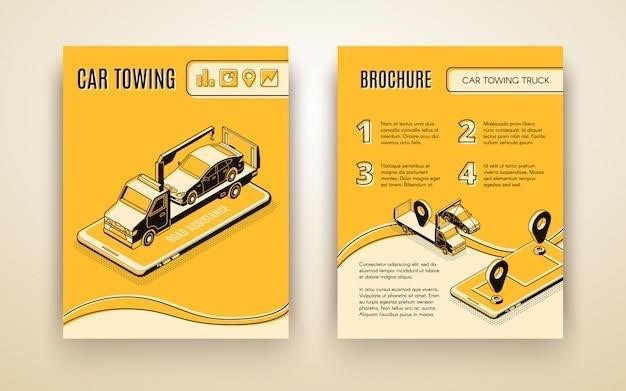PANSS⁚ A Comprehensive Overview
The Positive and Negative Syndrome Scale (PANSS) is a widely used psychiatric instrument designed to assess the core symptoms of schizophrenia (SZ) and schizophrenia spectrum psychotic disorders (SZ SPD). The PANSS is particularly employed in various research settings, especially for examining the efficacy of antipsychotic medications and for monitoring symptom changes in patients with schizophrenia. The PANSS is a 30-item rating scale that measures both positive symptoms, like delusions and hallucinations, and negative symptoms, such as social withdrawal and blunted affect. The PANSS has become a benchmark when screening and assessing change, in both clinical and research patients.
What is the PANSS?
The Positive and Negative Syndrome Scale (PANSS) is a widely used psychiatric instrument designed to assess the core symptoms of schizophrenia (SZ) and schizophrenia spectrum psychotic disorders (SZ SPD). It is a 30-item rating scale that measures both positive and negative symptoms, as well as general psychopathology symptoms. The PANSS is a comprehensive tool that provides a detailed picture of a patient’s symptoms, allowing clinicians to track changes in symptom severity over time and to evaluate the effectiveness of treatment. The PANSS is a valuable tool for clinicians and researchers who work with patients with schizophrenia and other psychotic disorders. It is a reliable and valid measure of psychopathology that has been used in countless studies and clinical settings.
The PANSS is often used in conjunction with other assessment tools, such as the Clinical Global Impression Scale (CGI), which provides a general assessment of the patient’s overall clinical status. The PANSS and CGI together provide a more complete picture of the patient’s condition, allowing clinicians to make more informed decisions about treatment. The PANSS is a valuable tool for clinicians and researchers who work with patients with schizophrenia and other psychotic disorders. It is a reliable and valid measure of psychopathology that has been used in countless studies and clinical settings.
The History and Development of the PANSS
The Positive and Negative Syndrome Scale (PANSS) was developed in 1987 by a team of psychiatrists led by Stanley Kay, Lewis Opler, and Abraham Fiszbein. The development of the PANSS was driven by the need for a more comprehensive and reliable instrument for assessing the symptoms of schizophrenia, a disorder that was often poorly understood and misdiagnosed. Prior to the development of the PANSS, there was no standardized way to assess the full range of symptoms associated with schizophrenia, leading to inconsistencies in diagnosis and treatment. The PANSS was designed to address this gap by providing a standardized and comprehensive tool for assessing the severity of positive, negative, and general psychopathology symptoms in patients with schizophrenia.
The development of the PANSS was a collaborative effort that involved input from leading psychiatrists and researchers in the field of schizophrenia. The scale was carefully validated through extensive research and clinical trials to ensure its reliability and validity. The PANSS has since become a widely accepted and utilized instrument for assessing schizophrenia symptoms, playing a significant role in advancing our understanding of the disorder and improving patient care.
The Structure of the PANSS
The PANSS is a 30-item rating scale that assesses the severity of symptoms in patients with schizophrenia. Each item is scored on a 7-point scale, ranging from 1 (absent) to 7 (extreme). The PANSS is divided into three subscales⁚ the Positive Scale, the Negative Scale, and the General Psychopathology Scale. The Positive Scale measures the severity of positive symptoms, which are characterized by an excess or distortion of normal functions. These symptoms include hallucinations, delusions, and thought disorder. The Negative Scale assesses the severity of negative symptoms, which represent a diminution or loss of normal functions. These symptoms include alogia (poverty of speech), avolition (lack of motivation), anhedonia (inability to experience pleasure), and social withdrawal; The General Psychopathology Scale measures the severity of general psychopathology symptoms, which include anxiety, depression, and hostility.
The PANSS is designed to provide a comprehensive assessment of the full range of symptoms associated with schizophrenia. The three subscales provide a detailed picture of the patient’s clinical presentation, allowing clinicians to tailor treatment plans to meet their individual needs. The PANSS is a valuable tool for clinicians, researchers, and patients alike, providing a standardized and reliable way to assess the severity of schizophrenia symptoms and monitor treatment progress.

Scoring the PANSS
The PANSS is scored by summing the ratings across all 30 items. The potential range for each subscale is as follows⁚ 7-49 for the Positive and Negative Scales, and 16-112 for the General Psychopathology Scale. A higher score indicates a greater severity of symptoms. The PANSS Composite Scale is calculated by subtracting the Negative Scale score from the Positive Scale score, resulting in a bipolar index that ranges from -42 to 42. A positive score indicates a predominance of positive symptoms, while a negative score suggests a predominance of negative symptoms.
The PANSS is typically administered by a trained clinician who conducts a structured interview with the patient. The clinician gathers information about the patient’s symptoms from the patient themselves, as well as from family members, friends, and medical records. The clinician then assigns a rating to each item based on the severity of the symptom. The PANSS can also be used to monitor the patient’s progress over time. By administering the PANSS at regular intervals, clinicians can track changes in symptom severity and adjust treatment plans as needed. The PANSS is a valuable tool for evaluating the effectiveness of antipsychotic medications and for monitoring the course of schizophrenia.
Applications of the PANSS
The PANSS has a wide range of applications in clinical practice and research. It is primarily used for assessing the severity of symptoms in patients with schizophrenia and other psychotic disorders. This includes evaluating the effectiveness of antipsychotic medications, monitoring symptom changes over time, and guiding treatment decisions. The PANSS is also used in research studies to examine the effectiveness of different treatments for schizophrenia, to identify factors that predict treatment response, and to investigate the underlying neurobiology of schizophrenia.
Beyond its use in schizophrenia, the PANSS has been adapted for use in other psychiatric disorders, such as bipolar disorder and obsessive-compulsive disorder. It has also been used to assess symptoms in patients with dementia, substance abuse, and other conditions. The PANSS is a versatile instrument that can be used to assess a variety of psychiatric symptoms. Its widespread use has led to the development of numerous studies and research findings that have advanced our understanding of psychotic disorders and their treatment.
The PANSS and Schizophrenia
The PANSS is a cornerstone in the assessment and management of schizophrenia. It provides a comprehensive evaluation of the core symptoms of the disorder, which are categorized into positive, negative, and general psychopathology dimensions. Positive symptoms, such as hallucinations and delusions, represent an excess or distortion of normal functions, while negative symptoms, like social withdrawal and blunted affect, reflect a diminution or loss of normal functions. The general psychopathology scale assesses symptoms related to anxiety, depression, and cognitive impairment.
The PANSS is particularly valuable in monitoring the effectiveness of antipsychotic medications, which are the mainstay of treatment for schizophrenia. It allows clinicians to track symptom changes over time, identify potential side effects, and adjust medication dosages as needed; The PANSS also serves as a tool for evaluating the effectiveness of psychosocial interventions, such as cognitive behavioral therapy, which aim to improve social functioning, reduce symptoms, and enhance coping skills. The PANSS plays a crucial role in ensuring that patients with schizophrenia receive individualized and effective treatment tailored to their specific needs.
The PANSS in Research
The PANSS has been instrumental in advancing our understanding of schizophrenia and the development of effective treatments. Its widespread use in clinical research has yielded valuable insights into the nature of the disorder, the effectiveness of various interventions, and the long-term course of the illness. The PANSS has been employed in numerous studies examining the efficacy of antipsychotic medications, both traditional and atypical, as well as the impact of psychosocial interventions, such as cognitive behavioral therapy and family therapy.
Researchers have utilized the PANSS to investigate the neurobiological underpinnings of schizophrenia by examining the relationship between symptom severity and brain structure and function. The PANSS has also been employed in studies examining the impact of various risk factors, such as genetic predisposition, environmental stressors, and substance abuse, on the development and progression of schizophrenia. The PANSS has become a standard tool for evaluating the efficacy of new treatments for schizophrenia, ensuring that clinical trials are conducted rigorously and that the results are reliable and generalizable.

Criticisms and Limitations of the PANSS
Despite its widespread use and significant contributions to the field of schizophrenia research, the PANSS is not without its critics. One major criticism is its reliance on subjective ratings, which can be influenced by the rater’s biases and interpretations. The PANSS’s reliance on a single, global assessment of symptoms, rather than examining specific symptom dimensions, has also been criticized. This approach can obscure the complexity of schizophrenia, which is characterized by a wide range of symptoms that can vary in severity and presentation across individuals.
Another limitation of the PANSS is its focus on negative symptoms, which can be difficult to assess accurately. Negative symptoms, such as apathy, social withdrawal, and anhedonia, are often subtle and can be easily misinterpreted as other conditions, making it challenging to distinguish them from other forms of psychopathology. The PANSS has also been criticized for its lack of sensitivity to changes in symptom severity, particularly in the early stages of treatment. This limitation can make it difficult to detect subtle improvements in symptoms, especially in patients with chronic schizophrenia.
Future Directions for the PANSS
Despite its limitations, the PANSS remains a valuable tool for assessing symptom severity in schizophrenia. Future research on the PANSS should aim to address its weaknesses and enhance its utility. One promising direction is the development of more objective measures of symptoms, such as neuroimaging techniques or physiological markers. These measures could provide a more reliable and objective assessment of symptom severity, reducing the influence of subjective ratings.
Another important area for future research is the development of more sensitive and specific measures of symptom change. This would allow researchers and clinicians to more effectively monitor treatment response and detect subtle improvements in symptoms. Additionally, future research should explore the potential of the PANSS for assessing other psychotic disorders, such as bipolar disorder with psychotic features and schizoaffective disorder. This would expand the scope of the PANSS and its potential clinical utility.
Finally, future research should investigate the development of a shorter version of the PANSS, which would be more efficient and practical for use in clinical settings. This would make the PANSS more accessible to clinicians and researchers, enabling them to more easily assess symptom severity in their patients.



























